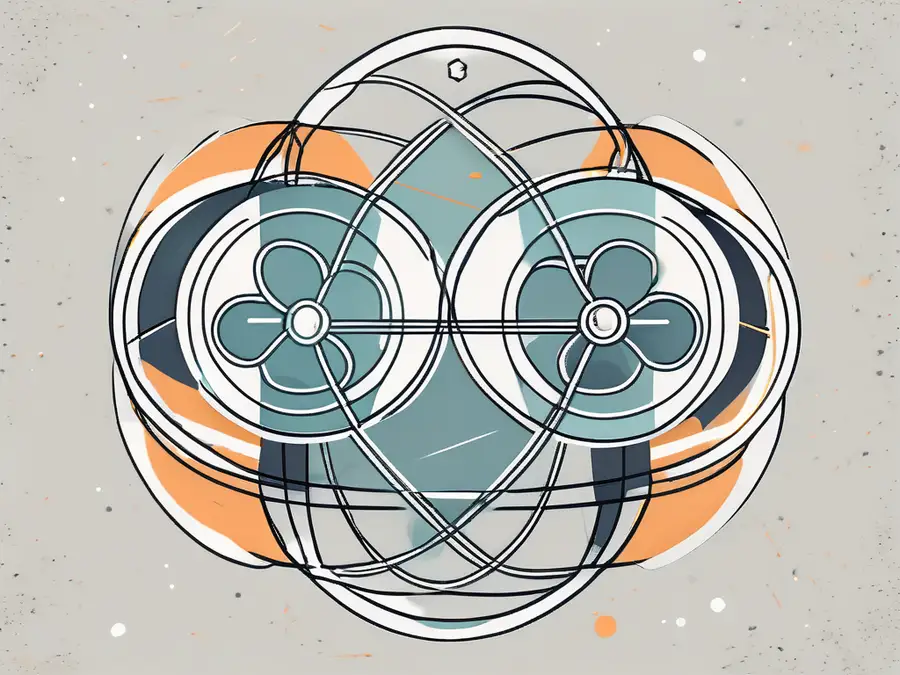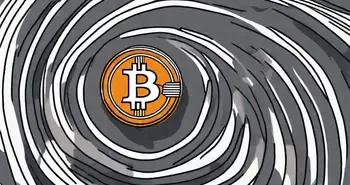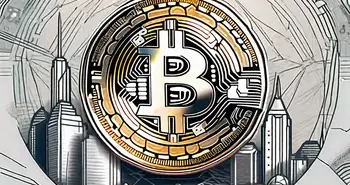A Thorough Exploration of Atomic Swaps in Cryptocurrency

In the fast-paced world of cryptocurrencies, technology is constantly evolving to meet the needs of users seeking faster, more secure transactions. One such innovation that has gained significant attention is atomic swaps. In this comprehensive guide, I will take you through everything you need to know about atomic swaps and how they are revolutionizing the cryptocurrency landscape.
Understanding the Basics of Atomic Swaps
Let's start by diving into the fundamentals of atomic swaps. So, what exactly are atomic swaps? In simple terms, atomic swaps allow for peer-to-peer cryptocurrency exchanges without the need for intermediaries like centralized exchanges. They enable the direct swapping of digital assets between different blockchain networks, eliminating the risks associated with trusting third parties.
The technology behind atomic swaps is based on smart contracts. Smart contracts are self-executing contracts with predefined conditions encoded in them. Once these conditions are met, the contract automatically executes the agreed-upon transaction.
What are Atomic Swaps?
Atomic swaps are a trustless method of exchanging cryptocurrencies. They use a combination of cryptographic techniques and smart contracts to ensure the secure and seamless exchange of digital assets. Transactions occur directly between the parties involved, without the need for a centralized exchange or any other intermediary.
The Technology Behind Atomic Swaps
The key technology powering atomic swaps is hash timelock contracts (HTLCs). HTLCs are smart contracts that utilize cryptographic hashes and time locks to ensure the safe exchange of assets.
To put it simply, HTLCs use hash functions to generate unique identifiers for transactions. The parties involved exchange these identifiers to ensure the authenticity and validity of the transaction. Additionally, time locks are used to enforce specific conditions within the smart contract, ensuring that the transaction takes place within a predefined timeframe.
By combining these technologies, atomic swaps provide a secure and efficient method for peer-to-peer cryptocurrency exchanges.
Furthermore, atomic swaps offer several advantages over traditional cryptocurrency exchanges. Firstly, they eliminate the need for intermediaries, reducing costs and increasing efficiency. This means that users can directly exchange their assets without having to rely on a third party to facilitate the transaction.
Secondly, atomic swaps enhance privacy and security. Since transactions occur directly between the parties involved, there is no need to disclose personal information to a centralized exchange. This reduces the risk of data breaches and identity theft.
Additionally, atomic swaps promote interoperability between different blockchain networks. Users can exchange assets across various platforms, regardless of their underlying technology. This opens up new possibilities for collaboration and innovation within the cryptocurrency ecosystem.
In conclusion, atomic swaps are a revolutionary technology that enables trustless and secure peer-to-peer cryptocurrency exchanges. By leveraging smart contracts and cryptographic techniques, atomic swaps eliminate the need for intermediaries, enhance privacy and security, and promote interoperability. As the cryptocurrency landscape continues to evolve, atomic swaps are poised to play a crucial role in shaping the future of digital asset trading.
The Importance of Atomic Swaps in Cryptocurrency
Now that we understand the basics, let's explore why atomic swaps are essential in the world of cryptocurrency.
Enhancing Decentralization with Atomic Swaps
Atomic swaps contribute to the core principles of decentralization in the cryptocurrency world. By enabling direct peer-to-peer exchanges, atomic swaps reduce reliance on centralized exchanges. This in turn enhances privacy and eliminates the risks associated with third-party custodial services.
Additionally, atomic swaps empower individuals to have complete control over their funds, ensuring that transactions are executed securely and efficiently.
Privacy and Security Benefits
Privacy and security are two paramount concerns when it comes to cryptocurrency transactions. Atomic swaps address these concerns by eliminating the need to expose personal information to centralized exchanges. As transactions occur directly between parties, the risks of identity theft and hacking are significantly reduced.
Moreover, atomic swaps offer enhanced security by making fraud and manipulation extremely difficult. With each transaction secured by smart contracts and cryptographic protocols, the risk of unauthorized access or tampering is greatly minimized.
The Process of Atomic Swaps
Now that we understand the importance of atomic swaps, let's explore the step-by-step process involved.
Step-by-Step Guide to Performing an Atomic Swap
Performing an atomic swap involves several key steps:
- Initiating the Swap: Both parties agree on the terms of the exchange, including the assets involved and the exchange rate.
- Creating the HTLCs: Each party creates a hash timelock contract, specifying the conditions of the swap.
- Verifying the HTLCs: The parties exchange the HTLCs to ensure their authenticity and validity.
- Executing the Swap: The swap is executed by revealing the preimage of the hash lock within a specific timeframe. Once the preimage is revealed, the transaction is completed, and both parties receive their respective assets.
Potential Challenges and Solutions
While atomic swaps offer numerous advantages, they are not without challenges. One major challenge is the lack of interoperability between different blockchain networks.
This challenge is being addressed through the development of cross-chain technologies such as interoperability protocols. These protocols aim to create bridges between different blockchains, allowing for seamless atomic swaps between them.
Additionally, the user experience of atomic swaps can be improved to attract wider adoption. Simplifying the technical aspects and creating user-friendly interfaces are key areas of focus for developers.
Different Types of Atomic Swaps
Atomic swaps can take different forms depending on the blockchain network involved. Let's explore two main types of atomic swaps:
On-Chain Atomic Swaps
On-chain atomic swaps occur directly on the blockchain network. They enable the exchange of digital assets between two parties by utilizing smart contracts and cryptographic techniques. On-chain swaps typically require both parties to have compatible blockchain wallets.
Off-Chain Atomic Swaps
Off-chain atomic swaps, also known as Lightning Network swaps, utilize layer-two solutions to enable fast and inexpensive transactions. These swaps occur off the main blockchain, reducing congestion and transaction fees. Off-chain swaps are particularly beneficial for frequent, smaller transactions.
The Future of Atomic Swaps
As with any emerging technology, the future of atomic swaps holds immense possibilities. Let's explore the predicted developments in atomic swap technology.
Predicted Developments in Atomic Swap Technology
One exciting development is the integration of atomic swaps into decentralized exchanges (DEXs). This integration would enable direct peer-to-peer trading without the need for centralized intermediary services.
Another anticipated development is the expansion of atomic swaps to support a wider range of assets and blockchain networks. As interoperability protocols mature, we can expect atomic swaps to become more versatile and accessible.
Furthermore, ongoing research and development aim to enhance the scalability and efficiency of atomic swaps, making them even more practical for real-world use.
Impact on the Cryptocurrency Market and Blockchain Technology
Atomic swaps have the potential to disrupt the cryptocurrency market and reshape the future of blockchain technology. By eliminating the need for centralized exchanges and enabling direct peer-to-peer transactions, atomic swaps promote decentralization, security, and user empowerment.
The increased adoption of atomic swaps could potentially reduce market volatility and foster a more mature cryptocurrency ecosystem. As more blockchain networks embrace atomic swaps, the overall efficiency and interconnectedness of the crypto market will likely improve.
Frequently Asked Questions (FAQ)
Here are some frequently asked questions regarding atomic swaps:
What are atomic swaps?
Atomic swaps are trustless, peer-to-peer cryptocurrency exchanges that occur directly between parties without the need for centralized exchanges.
How do atomic swaps work?
Atomic swaps utilize smart contracts and cryptographic techniques to ensure secure and seamless asset exchanges between different blockchain networks.
What are the benefits of atomic swaps?
Atomic swaps enhance decentralization, privacy, and security by eliminating intermediaries and reducing the risks associated with centralized exchanges.
What are the different types of atomic swaps?
The two main types of atomic swaps are on-chain atomic swaps, which occur directly on the blockchain network, and off-chain atomic swaps, which utilize layer-two solutions such as the Lightning Network.
What is the future of atomic swaps?
The future of atomic swaps holds promising developments such as integration with decentralized exchanges, expansion to support more assets and blockchains, and ongoing research to enhance scalability and efficiency.
How do atomic swaps impact the cryptocurrency market?
Atomic swaps promote decentralization, security, and user empowerment, which could reduce market volatility and foster a more mature cryptocurrency ecosystem.
Is it difficult to perform an atomic swap?
Performing an atomic swap can still be technically challenging for the average user. However, efforts are being made to simplify the process and create user-friendly interfaces to drive wider adoption.
Are there any risks associated with atomic swaps?
While atomic swaps are designed to be secure, risks can arise from vulnerabilities in smart contracts or user error. It is important to exercise caution and ensure proper understanding of the process before engaging in atomic swaps.
Now armed with a comprehensive understanding of atomic swaps, you are well-equipped to explore this groundbreaking technology. Whether you're a cryptocurrency enthusiast or a developer, atomic swaps hold immense potential for the future of decentralized finance. Embrace the power of peer-to-peer exchanges and witness the revolution of the cryptocurrency landscape!
Ready to take your trading to the next level with the power of blockchain technology? Morpher is your gateway to a new era of investing, where you can enjoy zero fees, infinite liquidity, and the freedom to trade across multiple asset classes. Whether you're interested in cryptocurrencies, stocks, forex, or even niche markets, Morpher's revolutionary platform offers fractional investing, short selling without interest fees, and up to 10x leverage to maximize your trading potential. Plus, with the Morpher Wallet, you maintain complete control over your funds. Sign up now to experience a unique trading experience on the Ethereum Blockchain and receive your free sign-up bonus. Embrace the future of trading with Morpher.

Disclaimer: All investments involve risk, and the past performance of a security, industry, sector, market, financial product, trading strategy, or individual’s trading does not guarantee future results or returns. Investors are fully responsible for any investment decisions they make. Such decisions should be based solely on an evaluation of their financial circumstances, investment objectives, risk tolerance, and liquidity needs. This post does not constitute investment advice.

Painless trading for everyone
Hundreds of markets all in one place - Apple, Bitcoin, Gold, Watches, NFTs, Sneakers and so much more.

Painless trading for everyone
Hundreds of markets all in one place - Apple, Bitcoin, Gold, Watches, NFTs, Sneakers and so much more.









